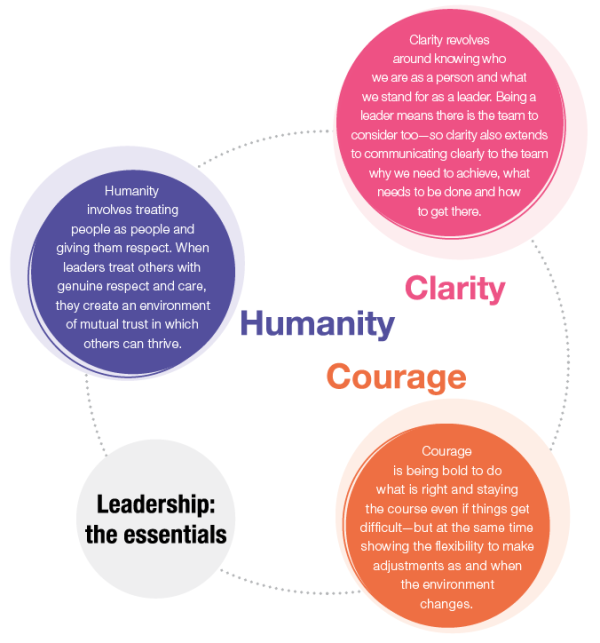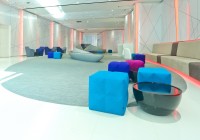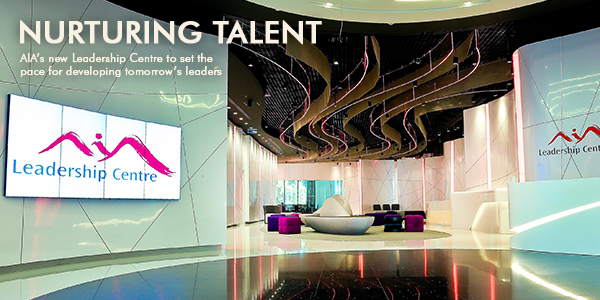
AIA setting the pace for developing leaders of tomorrow
In March, HR Magazine attended the opening of the brand new AIA Leadership Centre in Bangkok. The insurance giant is once again leading the way through its commitment to enhancing the quality, effectiveness and professionalism of its people. We spoke with Shu Khoo, Group Chief Human Resources Officer, AIA Group and the Centre’s new Dean, Tan Kar Hor to find out more about AIA’s bold approach to building an enviable leadership pipeline.

From left to right: Shu Khoo, AIA Group Chief Human Resources Officer; Narongchai Akrasanee, AIA Group Independent Non-executive Director; Apisak Tantivorawong, Finance Minister of Thailand; Mark Tucker, AIA Group Chief Executive and President; Varawan Vechasut, Deputy Secretary-General for Supervision, Office of Insurance Commission; Kar-Hor Tan, Dean of AIA Leadership Centre
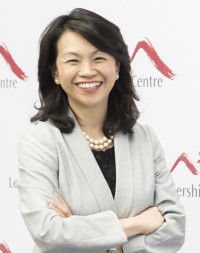
Clarity, courage, humanity
Leadership, like any other quality, has its baselines: a leader must have a track record of delivery and high performance together with a demonstrable capability to lead. At AIA, leadership goes way beyond this. Khoo explained, “We don’t only focus on baseline leadership qualities at AIA—we also concentrate on three core leadership essentials: clarity, courage and humanity. Through embracing these three essential qualities, we believe that our leaders will be better equipped to empower and engage their teams.”
Putting these leadership ‘essentials’ into practice requires leaders to ask ‘why’, ‘what’ and ‘how’ in connection with their roles in the organisation. Khoo elaborated, “Our leaders must know why they work here. The ‘Why’ is not just about showing up at work—it’s about why they come to work every day and why do they really want to lead people? Then they must consider why their role is meaningful for them. The ‘What’ relates to both our strategic focus and our business focus. The ‘How’ relates to the operating philosophy and methods with which they lead. Having a clear strategic framework, that all AIA leaders share and believe in, makes the ‘How’ even more compelling.”
This operating philosophy isn’t just morally important—it’s a business imperative and delivers business success.
Business imperative
The challenge for many HR departments is how to get leadership initiatives off paper and practically implemented. Additionally, significant investment in this area may be viewed by certain CFOs as a ‘want to have’ rather than a ‘need to have’. At AIA, things are different and the organisation is proactive in driving the practical implementation of leadership.
Khoo explained, “Our Vision is to be the pre-eminent life insurance provider in the Asia-Pacific region, and to realise our Vision, we need to develop our talent from within. If I recruit from outside of the Company, the talent I’ll receive will be only as good as what is available in the market. If you really want to raise the bar of the Company, and the industry as a whole, you need to invest in people development. Our senior management team is absolutely convinced of this because one of our guiding principles is to lead the industry.”
The strategy also fits into AIA’s Operating Philosophy—to do the right thing, in the right way with the right people…and the results will come. Khoo added, “It’s not about just striving to meet this month’s target, or even this year’s target, we are talking about sustainable growth—to achieve that you need to do things with a long-term perspective. This operating philosophy isn’t just morally important—it’s a business imperative and delivers business success. Developing leaders internally is a key part of our long-term strategy for growth.”
Futuristic venue maximises inspiration
The new AIA Leadership Centre in Bangkok is now at the forefront of enhancing the capabilities of AIA’s senior executives and distribution leaders across the Asia-Pacific region. The magnificent new two-floor complex is a vast open space with a futuristic design. In the spirit of a start-up, the idea of the space is to keep it adaptable. Classroom settings can be adapted to suit different training environments, even the walls can be moved to maximise flexibility. The breakout areas provide both collaborative and private spaces to suit employees’ needs. The sinuous lines, contemporary furnishings and an inspiration room with bean bags all encompass the desire of the firm to nurture its future leaders and best encourage them to explore new ideas and innovate.
Tan Kar-Hor, Dean, AIA Leadership Centre explained, “When designing the Centre we have tried to be very unconventional. Traditionally, most believe that L&D should be conducted in a classroom setting. Instead, we have created huge open spaces so that when people have classes they don’t just stay inside the classroom, but are encouraged to move around, create their own comfortable space, mingle and learn. This helps participants to be relaxed and open, and facilitates discussion and interaction.”
He added, “It is an era of e-learning with more people turning to the internet—but we also recognise that, especially when developing more senior-level talent, face-to-face interaction is still important. Our Leadership Centre facilitates spontaneous learning and inspiration, human touch and the opportunity to share. We want senior executives to find the Centre both stimulating and relaxing—to help maximise inspiration.”
Putting talk into practice
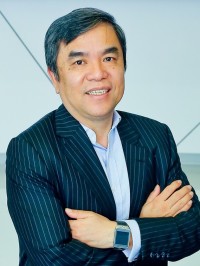
Tan Kar-Hor, Dean, AIA Leadership Centre
AIA’s investment in the Centre will bring far-reaching benefits. This year alone, the Centre already has eight programmes planned with a curriculum co-developed specifically for AIA with specialist L&D partners including INSEAD and LIMRA.
One of the first programmes to be rolled out at the Centre is the Enterprise Leadership Programme which will help leaders to operate outside their usual functional silos and think more on an enterprise-wide basis.
The Centre can also be used on-demand by business units throughout the organisation for their own learning and development purposes—and it looks like it will be a popular choice with more than 50 requests already having been made to use the facilities since it opened.
Stretchy talent
Beyond classroom-based development, AIA also places significant focus on providing its future leaders with business exposure, stretch assignments and project assignments. This occurs simultaneously with coaching and mentoring from senior leadership—to further assist with transitioning skill sets.
Khoo elaborated, “In terms of getting the development ball rolling, if we find an employee is doing their job very well, we look to give that person a stretch assignment. These are projects with different levels of complexity and potentially involve working with many different departments. They stretch an employee’s capacity and expose them to different projects. Employees may also be seconded on overseas business assignments—where they take on entirely new roles.”
Recognising the need for effective leadership development, championing the business case for a leadership pipeline and having the determination to make it happen are core ingredients for a successful HR programme in this vital area. Khoo concluded, “Every leader is busy, this is a fact of life. However, if we are not disciplined in our approach to development, no matter what we create or invest, the outcomes will not be sustainable. Aspiration and commitment both play a big role, and the AIA Leadership Centre represents a deep commitment of resources, money and time. When our leaders and future leaders come here, we encourage them to totally focus on the learning experience—we believe applying our capabilities in this disciplined manner will truly help differentiate us.”




